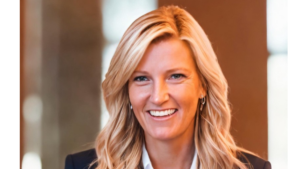Influencer marketing is having a “moment”, quite literally, according to Tailify co-founder Didrik Svendsen, but we must do more to appreciate its potential and reassess how we value it.
Svendsen was speaking to NDA at MadFest London 2019 following his talk on the Engagement and Experience stage ‘How data, strategy and measurement are key to mastering your 2020 influencer plans’.
“People trust people,” he says of the enduring power of word of mouth, which can now be supercharged through the advent of social media. “Social suddenly allowed people to talk not only to their friends, but also to much bigger audiences if they had something interesting, entertaining or inspiring to say. It’s turning to a meritocracy.”
Brands are increasingly seeing the power of influencers in their marketing strategies, but there are many misconceptions that need to be addressed in order to fully leverage its business potential.
For instance, through most marketing mediums, the aim is to buy reach and impressions, whereas instead it should be seen about achieving “moments” instead.
Another issue is limiting influencer strategy to the marketing teams and standalone campaigns: yet Tailify has worked with companies where feedback from influencer marketing has led to new product development or deeper customer service.
“Most people look at this as a channel, but it’s not,” he says. “If you do it the right way you can become a massive company and an influence overnight. Look at it not as a channel but something much deeper and fundamental.”
For inspiration, he points to influencer Kylie Jenner, who stopped shilling for other cosmetics companies, instead using her star power to launch Kylie Cosmetics. In the first 18 months, the company generated some $420 million in revenue — a figure that took beauty giants such as L’Oreal many decades to achieve.
“Think of yourself as a consumer,” he urges marketers. “Ask yourself honestly how you are most easily influenced — is it really a TV commercial or a paid Facebook ad, or is it instead friends, family and other people you trust?”
Tailify launched in 2013 because its founders believed in this “completely new change of influence at scale and saw this as an opportunity to tap into, understand and do something with”, he says.
“We’re helping brands to be data first,” he says, also pointing to the myths surrounding measurement in this space. “Once you know how to measure, you can optimise and then get towards the full potential.”
Yet, he says, there is confusion in influencer marketing about how we quantify and value it.
“The problem we have as an industry is that people focus on the small details — should it be micro-influencers or macro, engagement, clicks or followers and so on.”
This is too narrow: measurement needs both hard metrics and soft ones, and marketers should also focus more on the long-term benefits of influencer marketing.
“We live in a world of short-termism, which is understandable because of quarterly results and share prices. And those short-term measurements are very important, because that’s how you plan and optimise campaigns,” he says, cautioning: “At the same time it means we don’t always look forward and we should.”
THREE TAKEAWAYS
- Ask yourself the question as a consumer, who you would rather hear from — someone you trust on something that is relevant to me, or a TV ad or paid social media post?
- Fundamentally change your mindset from influencer being a channel to having the potential of being a much bigger and important part of you as a brand. Influence all of your channels.
- The impact of influencers is measurable in marketing; it is a myth that it is not. Look at the ways you measure other activities and treat this as you would in any other media with both hard and soft metrics employed.









